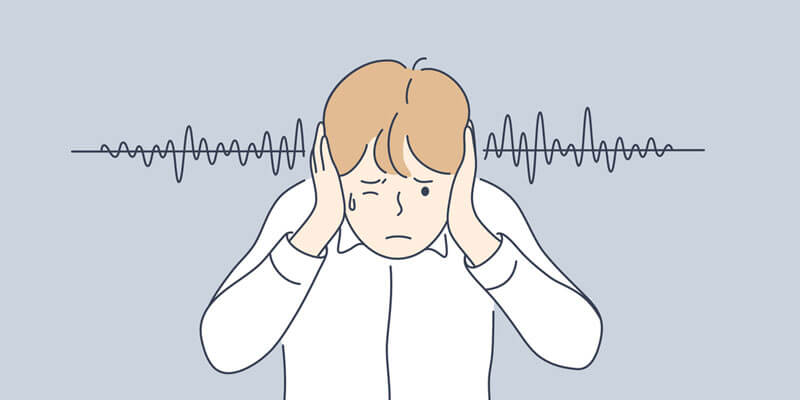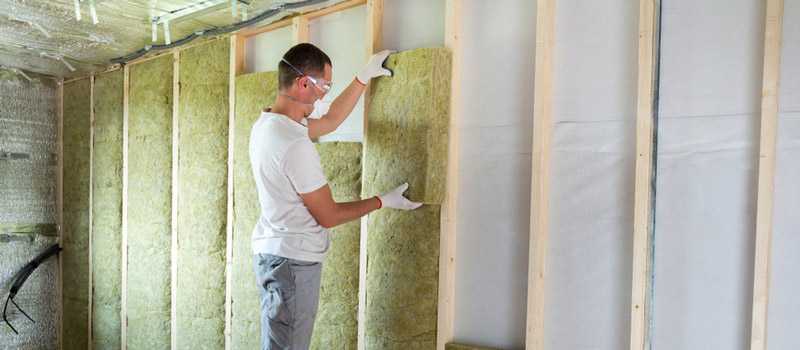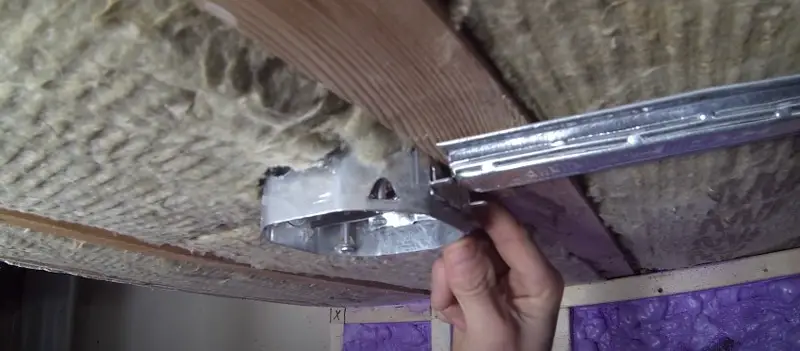If you are anything like me, you can’t function in a noisy environment; hearing low-frequency sound waves is the most annoying. In my opinion, they are the worst nightmare since they can travel through thick objects and far. It can be challenging to soundproof against bass sound, which leaves us wondering how to block out low-frequency noise.

Luckily, I’ve found a practical solution – a combination of sound-attenuating material and mass. Bass won’t stay out without a real fight with lots of materials and several special soundproofing materials.
Hence, this article covers what low-frequency noise is, its effect, and how to block it effectively.
What Is Low-Frequency Noise?
Low-frequency noise is commonly called bass. These are sound waves within the pitch range of 10Hz to 200Hz. This explains why it might be difficult to hear this type of pitch.

While you might not be able to hear it vividly, these annoying sound waves can be felt. This frequency of sound waves is usually generated from broilers, stereo subwoofers, heavy traffic, fans, generators, and an amp electric guitar, among many others.
But if you are working or trying to get a good night’s sleep and struggle with low-frequency noise, there’s a high chance of it coming from your neighbors. These low frequencies travel through any barrier, especially thin ones.
Hence, it’s vital to understand how to block out low-frequency noise to help you regain peace and quiet. For best results, you should find the noise source and address it before you start experiencing the negative effects of bass noise.
What Are The Effects Of Low-Frequency Noise?
Bass noise can be an exasperating experience when you are trying to focus on work or get a quality night’s sleep after a hectic day’s work. But if left unaddressed, in the long term, low-frequency noise can result in some severe health issues.

Bass noise has been associated with many mental and physical issues such as cardiovascular diseases, high blood pressure, sleep disorders, and many more. According to WHO, the downside of low-frequency noise on your health outweighs community noise. In fact, they claim that impacts of low-frequency noise demand immediate concern.
As such, addressing the bass noise is strongly recommended before experiencing any health issues mentioned above. There are several ways to block out this harmful noise, but using any appliance or device like a white noise machine won’t fix the problem.
The best way to do this involves making significant changes to your house to keep the low-frequency noise, and here’s how to do that:
How To Block Out Low-Frequency Noise: Step By Step Guide
The easiest and fastest way to solve this issue is to find the noise source and shut it off. However, if you can’t shut it off, it’s time to make some changes to soundproof your home.

Fiberglass Insulation
Suppose this type of noise pollution is becoming a pain in your neck. In that case, you should really consider investing in soundproofing your home by reconstructing the walls. Fiberglass comes in three types 一 loose-fill, blanket, and rigid boards.

Installing fiberglass insulation won’t only combat low-frequency sound waves, but help maintain your room’s temperature. Hence, insulating your wall with fiberglass will allow you to live in your home during winter or summer comfortably.
While installing fiberglass in your exterior wall is best, adding it to the interior walls improves the soundproofing performance. Also, if the living room is where you’re most affected by these low-frequency sound waves, then it’s best to concentrate on soundproofing the area.
Opt for Mass Loaded Vinyl
If you are not willing to spend much on reconstructing your room or an entire house, adding a thin mass-loaded vinyl layer to your new or existing wall might be the right way to go. The additional layer helps increase the total mass of your ceiling or wall for better soundproofing results.
Keep in mind that the mass-loaded vinyl layer won’t block out the bass noise completely, but it will help knock down the noise to some reasonable level. This way, you don’t have to worry about the mental and physical issues of this type of noise.
Resilient Channel
Another decent option for mitigating the negative effect of low-frequency noise is a resilient channel. This type of noise travels through vibration. So, if you can hear or feel the bass in your room, there’s a high chance that your ceiling is vibrating.

The best way to solve this is to install a resilient channel before the drywall to create a space between them. Thus, minimizing the transmission of low frequency through vibrations. In some cases, you might have to remove the drywall to install the resilient channel on the ceiling.
While it might be a difficult thing to do, it’s the most effective method for soundproofing low-frequency noise coming from your upstairs neighbor.
Increase Your Drywall
Regarding soundproofing, drywalls are thick enough to dampen the migrating noise without making your house look ugly. Therefore, installing drywall is your best weapon against low-frequency noise.
Making your wall thicker helps prevent bass noise from traveling into your home. These low-frequency sound waves vibrate through solid structures, so increasing the wall’s mass adds more resistance to its paths.
Although drywall is not the heaviest option, it’s a common choice because of its availability and affordable price point. If you can figure out the most affected wall in your home, add one or two layers of extra drywalls for a thicker surface for additional sound dampening.
We recommend using soundproof drywall for a shared wall since it contains several noise-proofing materials. Another benefit of using this option is it helps reduce the layers of drywall.
Use Soundproof Curtains
Windows are large openings allowing sound waves to come into your house. While closing it might reduce the amount of noise you can hear; gaps around the widow’s frame are big enough for these low-frequency sound waves to travel through.

For better results, you should hang soundproof curtains with sound-absorbing properties. These curtains are thick enough to stop the bass noise from entering your space.
Hang Soundproof Blanket
Like windows, doors are hard to seal completely. So, it would help if you started finding and sealing any cracks and gaps in the door’s frame. Besides, hollow doors offer the least resistance to the migrating sound wave.
After that, you want to cover the door with a soundproof blanket to increase the mass to stop bass noise from getting into your space. Even better, these special types of blankets are made of fibreglass insulation, which offers sound and thermal insulation.
If you are not looking to purchase a soundproof blanket, you can use your old, thick blanket.
Seal Gaps and Cracks
If it has been more than two decades since you renovated your house, there is a higher chance that the gaps and cracks are the underlying culprits of noise pollution. If this is the case, it’s paramount that you find every crack and gap in the ceiling and concrete walls and seal them.
We recommend sealing them with Green Glue because of their soundproofing properties. This glue is sold online or at your local home improvement store.
Installing Soundproof Panels
For homeowners struggling to shut off the low-frequency noise, soundproof panels are a better option than bass traps. They are easy to work with and effectively block a wide range of noise types.
So, you won’t go wrong with the soundproof panels, whether it’s a high or low-frequency problem. No wonder most recording studios’ walls have top-quality soundproof panels. It helps absorb any noise within the studio’s parapet and keeps the external noise from interfering with your peace and quiet.
They are readily available, and installing them is a breeze. More so, they come in different colors, shapes, and sizes to improve your room’s overall visuals.
Related FAQs
It isn’t easy to estimate how much a soundproofing project would cost. There are a lot of factors to consider, from the size of your room to the materials needed for significant results. Nonetheless, you should budget about $1500 for a room.
No, high-frequency noise is easier to absorb or block than low-frequency noise. The latter travels farther through thick walls, making them more harmful.
Yes, exposing your cats and dogs to low-frequency noise is dangerous, especially in the long run.
Conclusion
When it comes to blocking out low-frequency sound waves, adding more mass and decoupling are the most effective options. Bass are challenging to block since it travels farther and easily through thicker solid surfaces. Hence, it’s important to determine the noise source and address it, if possible.
Else, try out one of many possible mentions in this list. Hopefully, you can block out the bass frequencies effectively and stay safe from its negative effects.
